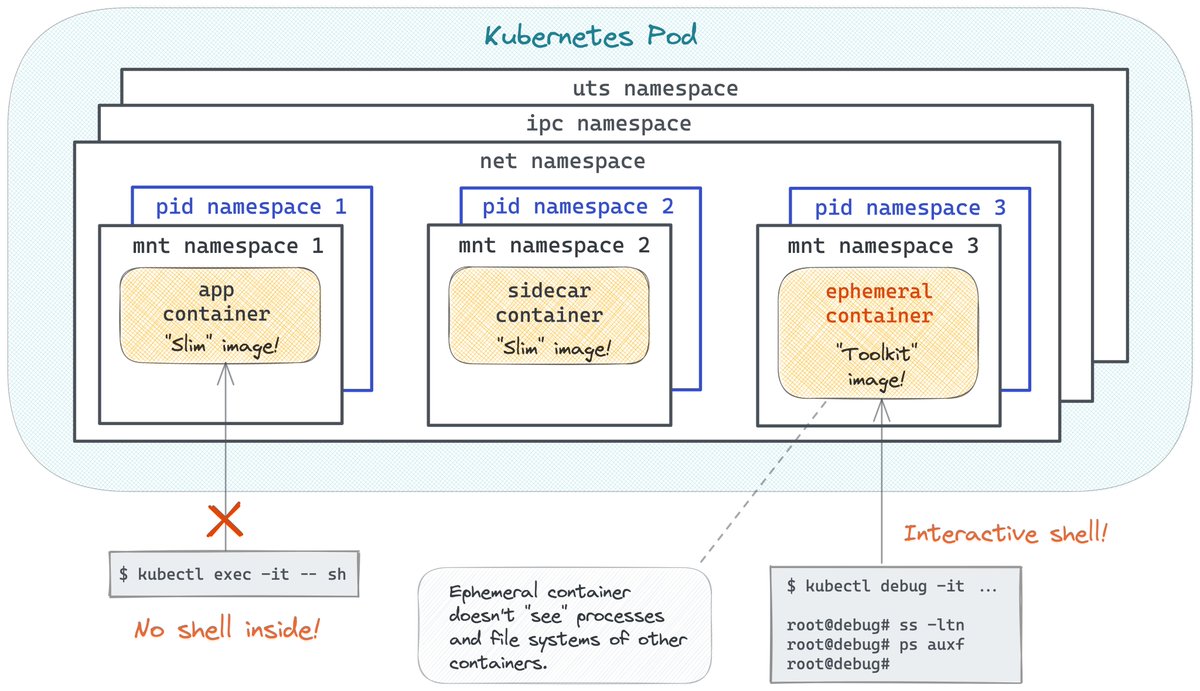
Debunking Container Myths 🧵
A (never-ending) series of articles that I started writing a couple of years ago to fix my own misconceptions about containers 🔽
A (never-ending) series of articles that I started writing a couple of years ago to fix my own misconceptions about containers 🔽

1. Does a container image have an OS Inside?
Turns out not! Read the article to see how to create a pure scratch container. And, more importantly, to understand why it's possible.
iximiuz.com/en/posts/not-e…
Turns out not! Read the article to see how to create a pure scratch container. And, more importantly, to understand why it's possible.
iximiuz.com/en/posts/not-e…
2. You Don't Need an Image To Run a Container
The workflow popularized by Docker might make you think that images are rather mandatory to run containers. Well, they are not. But what are they for?
Read the article to learn the truth 😉
iximiuz.com/en/posts/you-d…
The workflow popularized by Docker might make you think that images are rather mandatory to run containers. Well, they are not. But what are they for?
Read the article to learn the truth 😉
iximiuz.com/en/posts/you-d…
3. You Need Containers To Build Images
Continuing the theme of how images is the secondary construct - read how Docker (used to) build images.
*things might've become more involved with buildx, but this article remains a good starting point.
iximiuz.com/en/posts/you-n…
Continuing the theme of how images is the secondary construct - read how Docker (used to) build images.
*things might've become more involved with buildx, but this article remains a good starting point.
iximiuz.com/en/posts/you-n…
4. Containers Aren't Linux Processes
Not every container out there is built of namespaces and cgroups. But even when it's a traditional Linux container, it's not really a process. What is it then?
Read the article to find out 😉
iximiuz.com/en/posts/oci-c…
Not every container out there is built of namespaces and cgroups. But even when it's a traditional Linux container, it's not really a process. What is it then?
Read the article to find out 😉
iximiuz.com/en/posts/oci-c…
5. From Docker Container to a Linux VM
A (not only thought) experiment to show how thin is the line between containers and full-fledged virtual machines.
Might help you to break a few mental barriers on the way to a better understanding of containers 😉
iximiuz.com/en/posts/from-…
A (not only thought) experiment to show how thin is the line between containers and full-fledged virtual machines.
Might help you to break a few mental barriers on the way to a better understanding of containers 😉
iximiuz.com/en/posts/from-…
There are more articles available on the blog, and a few new write-ups are coming out soon.
The best way not to miss them? Subscribe to my monthly round-up 😉
iximiuz.com/en/newsletter/
The best way not to miss them? Subscribe to my monthly round-up 😉
iximiuz.com/en/newsletter/
• • •
Missing some Tweet in this thread? You can try to
force a refresh









